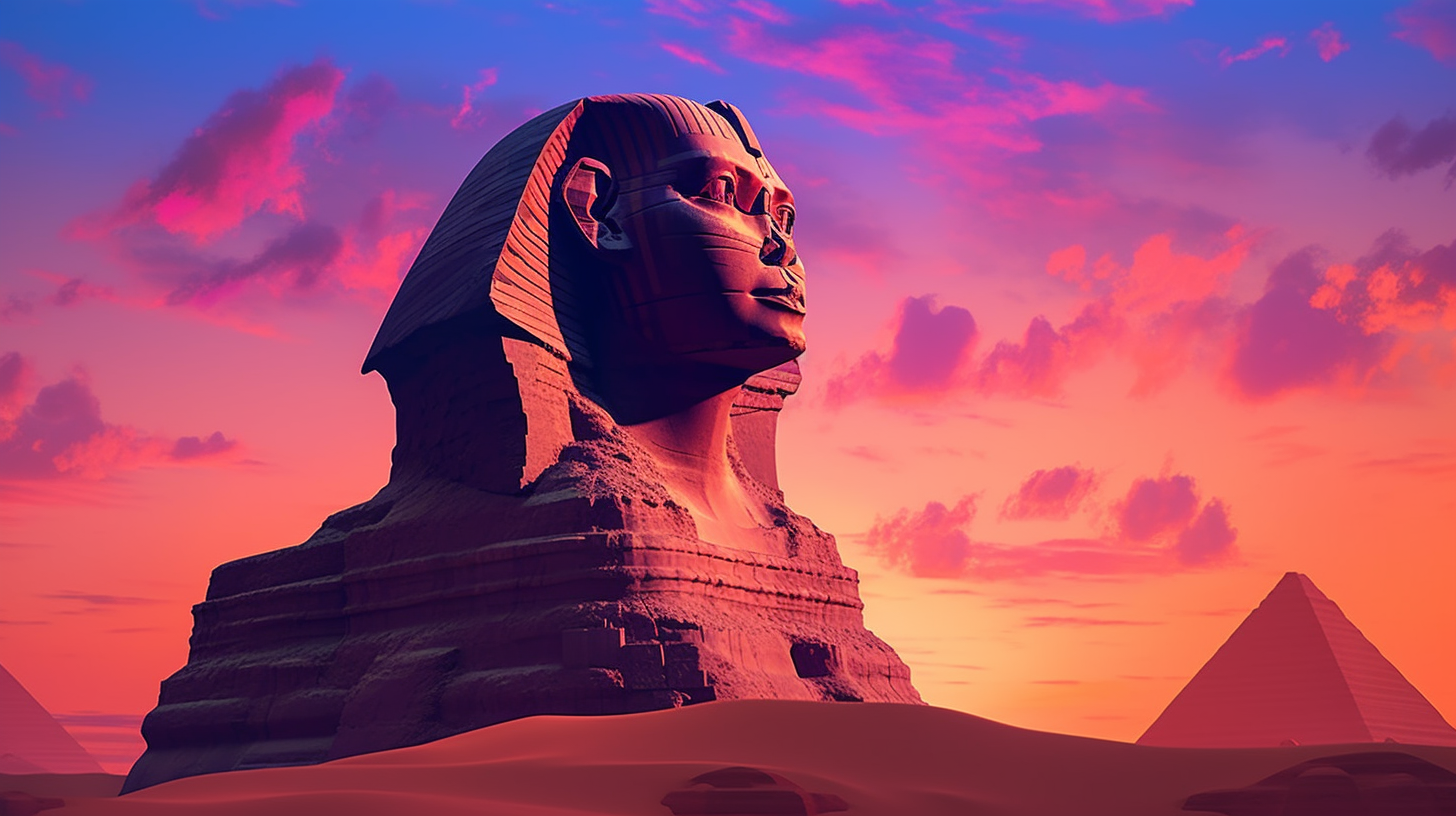Embark on the Journey:
Within the expansive realm of Egypt, amidst the drifting sands of time, stands a guardian cloaked in mystery that has enraptured the minds of generations. The Great Sphinx of Giza, featuring the body of a lion and a human head, continues to captivate archaeologists, historians, and inquisitive souls. This iconic symbol of ancient Egypt embodies secrecy, enigma, and a myriad of unanswered riddles. Delve into the historical significance, theories, and ongoing investigations surrounding this eternal marvel in this piece.
An Ode to Ancient Mastery:
It is believed that the Great Sphinx was crafted during the rule of Pharaoh Khafre in the Fourth Dynasty of the Old Kingdom, circa 2500 BCE. Carved from a singular limestone formation, this immense monument stands 20 meters tall and extends an impressive 73 meters in length. The primary purpose behind its creation remains a topic of contemplation, spawning various theories over time.

Symbols and Significance:
One prevalent theory suggests that the Sphinx symbolizes a custodian of divine knowledge and sagacity. The human countenance, often thought to resemble Khafre, could embody the pharaoh’s divine link and his intermediary role between the earthly and celestial domains. Conversely, the lion’s physique represents fortitude, dominance, and safeguarding. The Sphinx’s orientation towards the east aligns with the sunrise and the cycle of regeneration, embodying eternal life in the ancient Egyptian belief system.
Puzzles and Enigmas:
Despite centuries of research on the Sphinx, myriad mysteries continue to enshroud this ancient enigma. An intriguing puzzle lies in the erosion patterns visible on its form, especially the pronounced weathering on its sides. These patterns have spurred theories, with geologist Dr. Robert Schoch proposing an older origin for the Sphinx, dating back to a rainier epoch in Egypt’s past. This challenges the prevailing view of the Sphinx’s construction during the Old Kingdom.
Moreover, the absence of inscriptions or textual links directly associating the Sphinx with its creators adds to the intrigue. While many ancient Egyptian edifices bear inscriptions or hieroglyphs offering insights into their purpose or architects, the Sphinx stands as a mysterious anomaly.
Contemporary Scientific Ventures:
Modern technologies have opened new vistas in unraveling the Sphinx’s mysteries. Ground-penetrating radar surveys and non-invasive techniques have been employed to explore potential hidden chambers or passageways beneath the monument. A significant study in 1991 led by Dr. Mark Lehner uncovered compelling anomalies beneath the Sphinx’s paws. Further investigations are required to unveil the concealed secrets below the desert surface.
Preserving the Legacy:
Safeguarding the Great Sphinx for posterity is paramount. Environmental elements like humidity, pollution, and rising water levels have threatened the monument over time. Recognizing its historical importance, restoration and conservation endeavors have been initiated to protect this iconic emblem of ancient Egypt’s grandeur.
Epilogue:
The Great Sphinx of Giza continues to bewitch us with its majestic presence and enigmatic charm. As we delve into its ancient genesis and ponder its significance, we are reminded of our ancestors’ unparalleled skill and artistry. Ongoing explorations, paired with technological progress, hold the promise of illuminating the mysteries veiling this enduring guardian. Amidst the evolving world and shifting sands, the Sphinx stands as a timeless testament to humanity’s relentless pursuit of knowledge, resilience, and unyielding curiosity.
